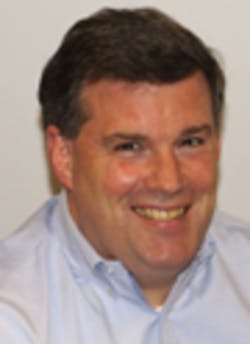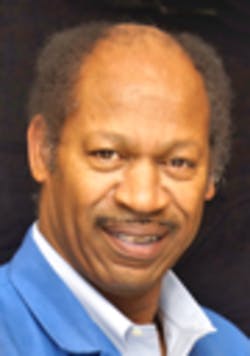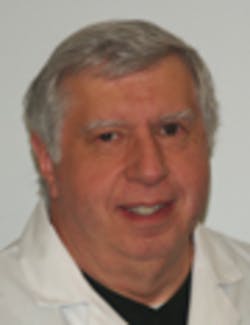LTX-Credence Pursues Low Test Cost for RF Connectivity Devices
LTX-Credence addresses semiconductor test in a variety of areas, including microcontroller, power-management, ASIC, ASSP, data-converter, and RF test. To do that, it deploys a variety of platforms, including the ASLx for linear devices; the Diamondx for ASSPs and microcontrollers; the X-Series for devices used in mobile, power, automotive, industrial, and instrumentation markets; and the PAx for RF power-amplifier and front-end-module test.
The company’s most recent initiative has been to cut the cost of RF test, according to LTX-Credence officials Bruce MacDonald, CTO; Lenny Leon, business development specialist and chief RF technologist; and John DeGiorgio, director of new business development, speaking during an interview at the company’s Norwood, MA, headquarters.
This initiative required rethinking all aspects of architecture and design to create an integrated solution—including modulated RF source and measure capability, direct-baseband source and capture, a low phase-noise clock reference, and embedded DSP, according to Leon.
The result of this initiative, according to DeGiorgio, is the new Nighthawk brand, which leverages the latest advances in CMOS process technology and more than 30 years of LTX-Credence’s RF and DSP design experience. The first member of the Nighthawk family, he said, is the NighthawkCT, which is smaller than traditional solutions by a factor of six, offers more than twice the performance in measurement bandwidth, and cuts capital cost in half.
The NighthawkCT Test System—introduced in December 2012—can add quad-site RF test capability to any of the company’s Diamond or X-Series testers. The CT in NighthawkCT, said DeGiorgio, stands for “connectivity test” and refers to single-radio devices that handle Zigbee, Wi-Fi, Bluetooth, GPS, and DVB as well as devices supporting proprietary RF implementations.
Applications, he said, range from satellite receivers to key fobs and garage-door openers. NighthawkCT, he said, is not optimized for multiradio cellular devices, for which the company offers the larger Dragon RF platform for the Diamond. Similarly, NighthawkCT is not optimized for the test of front-end components like power amplifiers, for which the company offers other test solutions.
But for connectivity devices, DeGiorgio said, NighthawkCT can offer significant cost savings. The cost of a traditional test system for RF test, he said, begins at about $400k for the infrastructure. Adding high-performance instruments brings the price tag to $600k, and the addition of RF capability yields a final price in the $900k range. For a complete Diamond equipped with NighthawkCT, he said, the first number in the price tag is 3, not 9. And that’s the total price—not the upgrade price—he emphasized.
Nevertheless, the upgrade business is one that the company is looking to take advantage of. MacDonald noted that there is an installed base of about 750 Diamond systems, and in many cases the Diamond, or X-Series, customers never envisioned needing to test RF devices. But as microcontrollers increasingly take on RF functionality, these customers are finding the need to add RF test capability. DeGiorgio said upgrading an existing Diamond with laptop-sized NighthawkCT takes about 30 minutes—no drilling is required. A single NighthawkCT supports quad-site test; an additional system can be added for eight-site test.
NighthawkCT is a self-contained RF test system that supports direct-baseband source/measurement functions as well as carrier-based measurements.
Leon attributed the NighthawkCT system’s performance to improvements in FPGA and RF technology. The DSP capabilities of today’s FPGAs, he said, enable the rapid performance of operations such as decimation. And as for RF performance, he said LTX-Credence is the beneficiary of its RF customers. For example, the data converters used in the NighthawkCT were designed for cellular infrastructure applications. The air-cooled system employs all CMOS components, he said. There are no GaAs devices.
Features include carrier detect synchronization (CDS), which compensates for the indeterminance in DUT sequencing that occurs, for instance, after a microcontroller’s command to send a data packet. “With CDS,” DeGiorgio said, “you don’t process useless data. You only process the payload.”
NighthawkCT operates from 80 MHz to 6 GHz and provides a 200-MHz IF bandwidth to support the test of 802.11ac devices. The tester also features a one-year calibration cycle—the Night-
hawkCT can be swapped out and returned to the factory for calibration.



